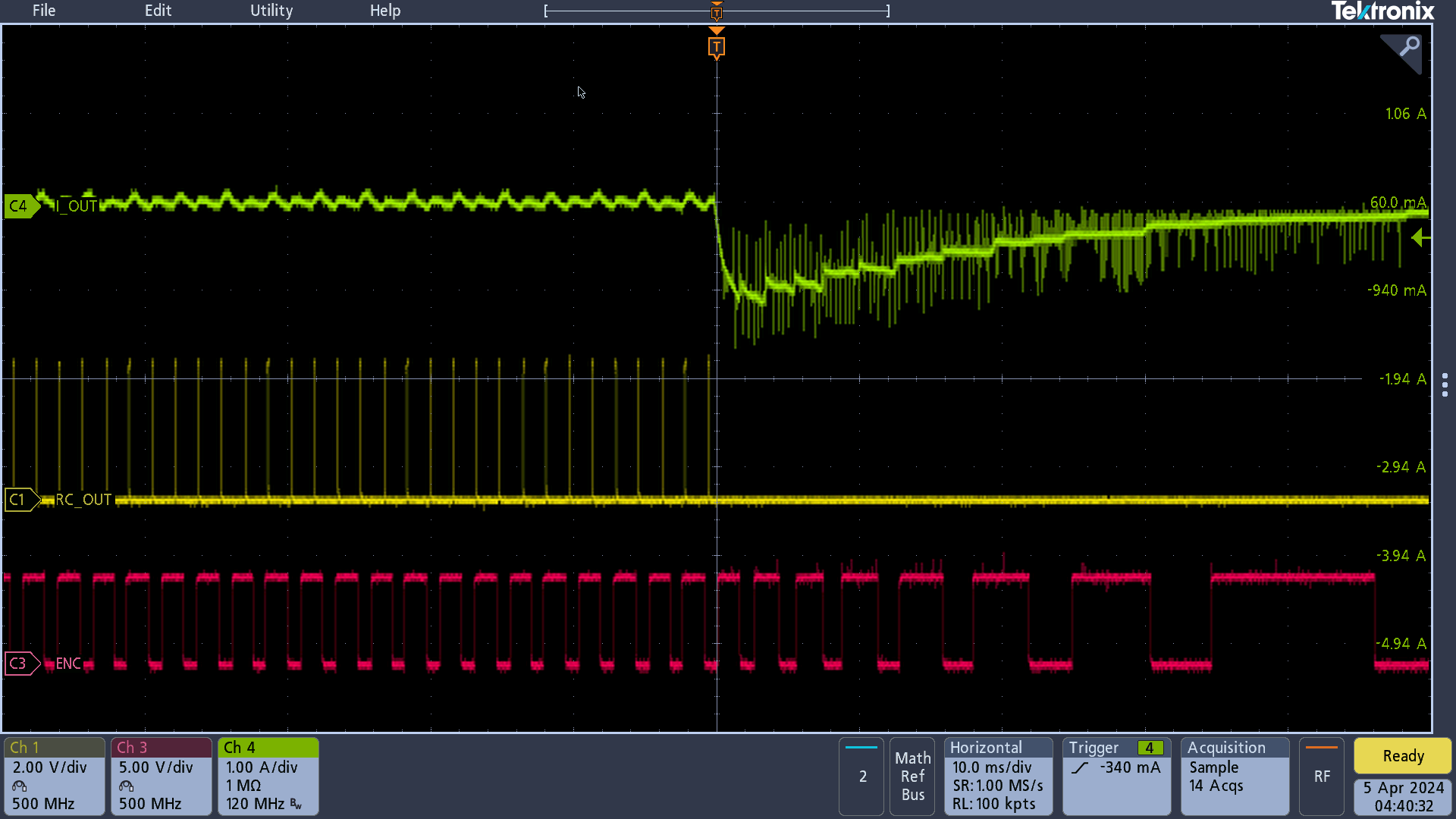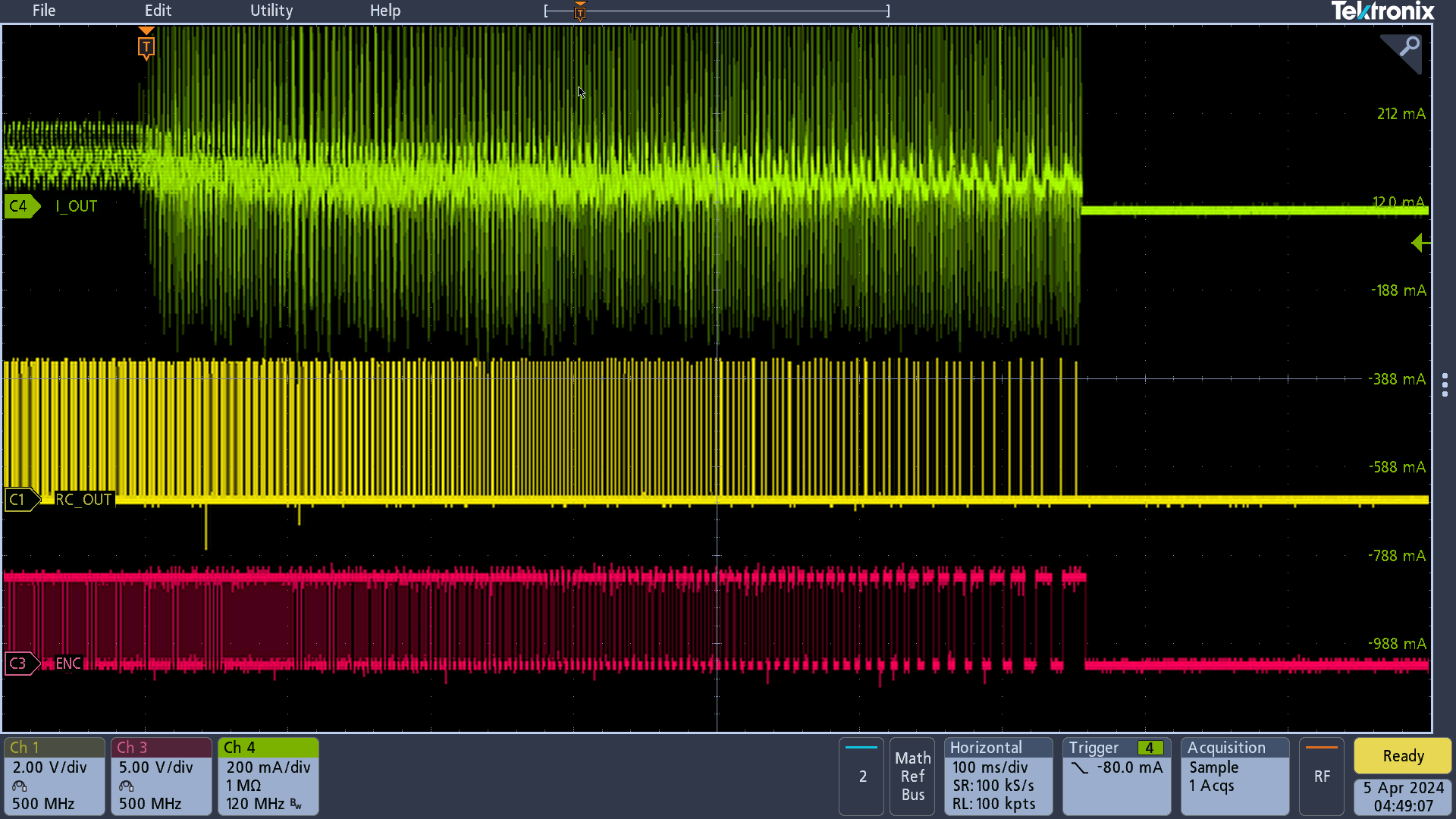SLVAFO8A April 2024 – May 2024 DRV8214 , DRV8234
- 1
- Abstract
- Trademarks
- 1Introduction: Need for Sensorless Designs
- 2Ripple Counting − Concept
- 3Case Study: Robotic Wheel Drive
- 4Challenges and Workarounds
- 5Summary
- 6References
- 7Revision History
4.2 Motor Inertia During Stop
In this case, the RC_OUT pin does not give out pulses when the current to the motor is turned off either during Hi-z or brake modes. Due to inertia, the motor continues to rotate for some time before coming to a halt, during which ripples fail to be detected. This is due to change in direction of current as observed in Figure 4-4. RC_OUT stops giving out pulses whereas the motor continues to rotate due to inertia.
 Figure 4-4 RC_OUT Stops Pulse Output
During Normal Stop
Figure 4-4 RC_OUT Stops Pulse Output
During Normal StopA possible workaround for this case is to use the soft-stop feature (EN_SS = 1b). This allows the motor to come to a halt gradually which enables detection of ripples for a longer time leading to a lesser percentage of missed ripples. Figure 4-5 shows the performance of ripple counting during soft-stop. TINRUSH[15:8] (MSB) was set to 0x08.
 Figure 4-5 RC_OUT Tracking Pulses During
Soft Stop
Figure 4-5 RC_OUT Tracking Pulses During
Soft StopAs explained in the data sheets of DRV8214 and DRV8234, the soft-start-stop feature is activated only during motor voltage or speed regulation. To use the soft-start-stop feature without speed regulation, use the following steps:
- Set REG_CTRL register to 10b (speed regulation mode).
- Set W_SCALE to 11b (128 rad/s).
- Set WSET_VSET to 0xFF (255).
- Set TINRUSH to an appropriate value.
This sets the speed reference value to the highest possible value (255*128 rad/s = 32640 rad/s). Since the upper limit for the duty cycle is 100% at a particular voltage level, this effectively means that the device is unable to regulate speed, thereby allowing the soft-start-stop feature to be used without speed or voltage regulation. If PWMing externally, programming the duty cycle to reduce gradually to 0 resembles soft-stop behavior.